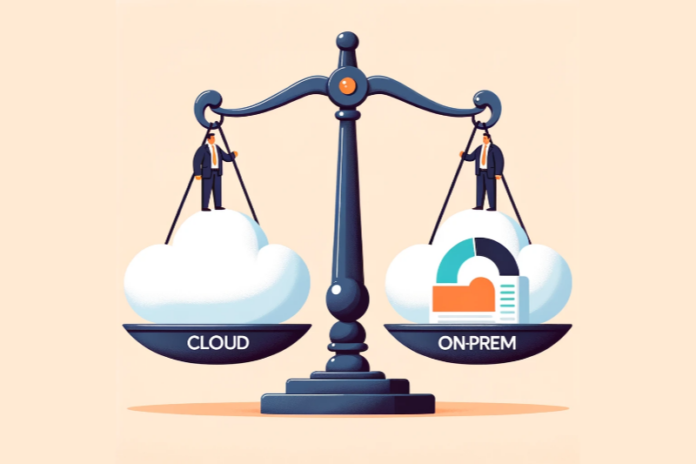In recent times, enterprises have been reassessing their cloud strategies more thoroughly. While a “lift and shift” approach to public cloud has found success for some organisations, others have encountered ‘runaway spend’ and performance issues.
As a result, cloud repatriation is increasingly gaining steam across industries. The evolving landscape prompts us to consider: “What strategies are enterprises adopting to balance cost, performance, security, and agility in their cloud journeys?”
To explore these varying perspectives, senior IT executives gathered for a roundtable titled “Resolving the Cloud Paradox,” organised by Jicara Media and hosted by Telstra and Equinix.
Finding the perfect fit
For ONG&ONG Group, a multi-disciplinary consultancy firm for the Architecture, Engineering and Construction (AEC) industry, the cloud has been a major enabler for their architects and engineers. Daniels Chandra, the firm’s Director for Digital Technology, stated that the daily workload was too overwhelming for on-prem solutions, making cloud migration an obvious choice.
“Our architects and engineers use resource-intensive applications daily to handle 2D drawings, 3D models, and Building Information Modelling (BIM). These require substantial data storage—sometimes even terabytes per month. That’s a lot of data traffic,” he said.
In addition to storage needs, the firm’s distributed workforce required real-time collaboration on projects, which was only viable with cloud infrastructure.
“The software we use requires a high level of collaboration that’s only possible with cloud infrastructure. Think of it like an online or web-based document editor, where data is essentially being authored and edited by multiple users at the same time and trackable through audit trail. In our case, it’s BIM data for building projects, allowing architects, engineers, and other consultants from multiple locations to work on design elements like walls, doors, and windows simultaneously. This kind of real-time data authoring and management isn’t feasible with on-premises solutions,” Chandra noted.
Meanwhile, for DP Architects, which operates from 17 global offices, data sovereignty and governance were major reasons not to use public cloud services. Derek Herbert, the company’s CIO, said that although they use a variety of SaaS-based applications, they built their cloud infrastructure in-house.
“By upgrading all of our infrastructure to be data centre-centric, we’ve amassed a significant amount of storage—around 470 terabytes, which spans over 50 years of data,” he said.
However, the company is not closing its doors on cloud migration in the future.
“Will we ever migrate our data to the cloud? Probably not, because of the cost. We’ll only consider it when we see viable cost models. Currently, the file sizes we handle, especially for larger models and 3D rendering, are too large to make cloud migration cost-effective at this stage,” the CIO added.
In the case of a life sciences company with a global presence, figuring out their best cloud strategy has proven to be a challenge, especially in the Chinese market.
“We normally prefer to have one standard solution to design the apps that everyone can use. But this is becoming increasingly challenging now due to data regulations. Some vendors manage to comply, but we’re increasingly having to work with smaller cloud providers who lack the resources for such compliance,” shared a senior IT leader from the life sciences company.
The senior IT leader added that using a local cloud solution from China also poses a challenge, as the rest of the world would have difficulty using it.
“Now we’re seeing that China is pushing back. Access to local cloud platforms is slow, and some can’t even access it. This has us questioning our current strategy. We’re in a dilemma, as our customers are also requesting localised solutions for China, Korea, and Japan. A global cloud solution is complicating matters further,” the senior IT leader noted.
Tailored solutions
To address the unique data requirements of each enterprise, having a reliable tech partner is invaluable.
The partnership between Telstra and Equinix provides fast, simple and integrated cloud services in three key areas:
- Optimisation of network and fully scalable cloud infrastructure.
- Connectivity to various ecosystems, including cloud and network providers, payment partners, and SaaS providers.
- Latency reduction through edge infrastructure development.
According to Rajaneesh Kurup, Segment Strategy Director, Asia Pacific, Equinix, preparation and foresight is everything when it comes to managing data, citing the COVID-19 pandemic as a perfect example.
“Nobody anticipated something like that could happen. Our conversations with companies revealed that it took six to eight months just to set up basic networks for remote work. It was a huge struggle, as existing networks weren’t designed to scale connectivity. Moreover, there was a 12-month waiting time for both setting up basic connectivity and acquiring the necessary hardware,” he added.
As of the moment, enterprises are increasingly adopting hybrid and multi-cloud strategies, because of scalability and agility issues with a single platform approach, Kurup observed.
“Even companies ‘born in the cloud’ initially often used a single public cloud infrastructure provider, but now they’re using multiple. The challenge for them lies in networking across these multiple clouds and transferring data workloads. Given these complexities, the network will play a foundational role to enable all that. In most cases, it’s the least flexible part, especially as the volume of data generated and transferred continues to grow. Network costs are not going to go down, making the foundational network increasingly important,” he explained.
Meanwhile, Truman Crotty, Data Centre and Hybrid Cloud Lead for South East Asia at Telstra, remarked that organisations opting for cloud platforms based solely on the lowest upfront infrastructure costs could face more harm than good in the long run.
“To extract full value from digital investments, enterprises should move away from cost as a key criterion, and instead evaluate capabilities, technologies and the value to their business,” he said.
Telstra, in partnership with Equinix, can connect enterprises to the industry’s most powerful cloud ecosystems, network connectivity solutions, and multi-cloud interconnection services wherever in the world they need them. Customers can pick and choose the solution that fits their needs, along with ready access to Equinix’s data centres and on-demand bare metal environments.
“The ability to choose an integrated selection of pay-as-you-go physical servers and data centres with close proximity to hyperscalers, supported by a global network, is a game-changer to customers. This flexibility can apply to their core IT resources as well as test and development environments,” Crotty continued.
Growth areas
In the end, what works for one organisation may not necessarily suit another. Take BP Architects, for example, which has found success with on-prem infrastructure.
According to CIO Derek Herbert, the abrupt shift to remote work during the onset of the pandemic exposed disparities in infrastructure across different employee locations— a roadblock they had to solve immediately.
“We discovered that some of our remote employees were dealing with extremely poor connectivity, measured in kilobytes per second rather than megabytes or gigabytes,” he recalled.
Today, the company is running a high-performance compute cluster, in preparation for AI applications.
“We started exploring high-performance computing about five years ago for simulation modelling, building environments, and physics calculations. When we approached cloud providers, they made various promises—like the ability to quickly scale resources and various other capabilities. However, some of the software we use is very much open source, because we’re able to develop our own software. Now, we are building HPC clusters within our on-premises data centre, and that’s been quite interesting,” Herbert added.
Enterprises moving to a multi-cloud infrastructure today face more challenges, from juggling supply chain disruptions, modernising legacy applications that require more technology stack flexibility, to safeguarding data and more.
The Telstra and Equinix partnership aims to help enterprises navigate such complexities, while re-architecting their services to access ecosystems for the rapid build-out and delivery of products and services at scale.
















